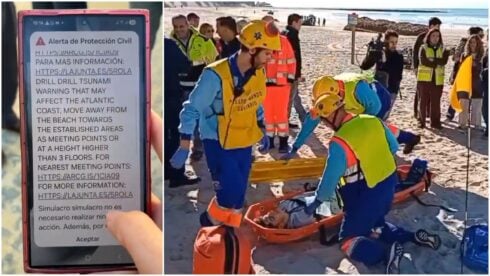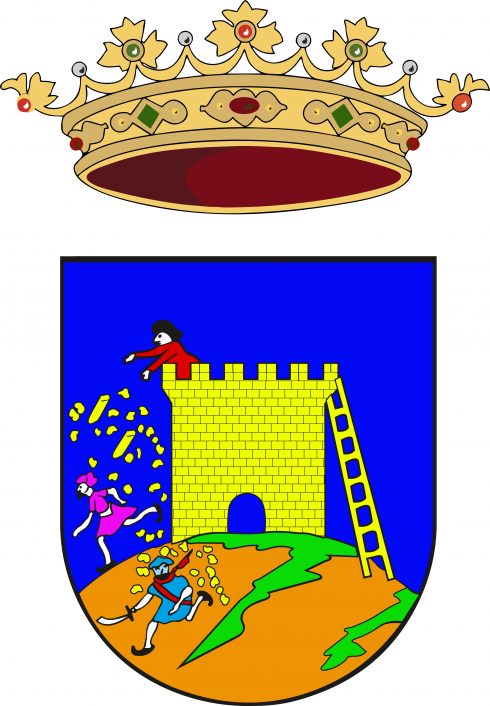Spain’s idyllic white villages are spread out all over the south, below or at the summit of mountains, in forests and hidden canyons, but there’s one pueblo inside a network of caves that deserves to be singled out.
Setenil de las Bodegas, in the province of Cadiz, is known as Spain’s cave village.
Whitewashed houses are built into a surrounding labyrinth of cliffs, above the river Trejo north-west of Ronda.
Some of the roofs of the town’s homes and stores are actually made up of overhanging cliffs.

Many of the town’s main streets are also sheltered by these huge rocks, with some of them draped in ivy.
Walking through the town feels almost surreal, you just can’t imagine that a town like this exists, or inhabitable.
In fact, 2,732 people live here and the village has been occupied since the twelfth century.
Excavated objects from the caves demonstrate that they were inhabited 25,000 years ago.
It’s believed Troglodytes (cave dwellers) lived within the dark crevasses in this village, and in more modern times the villagers then built houses in the spaces between the rocks.

This prevented them from getting too hot in the summer, and too cold in the winter.
Modern Setenil de las Bodegas started in 1484, when the Christian armies expelled its Moorish rulers.
It took the Christians 15 days to rid the town of the Moors who tried to defend themselves from the castle at the top of the mountain, Castillo.
The town name is believed to have been taken from the Roman Latin phrase, ‘septem nihil’, which means, ‘seven times no’ – a phrase believed to be about earlier invasions or skirmishes.
The Christian rulers developed an agricultural base of olives, almonds and vineyards.
Olive and almond trees still flourish around the town, but its wine trade was wiped out by the phylloxera insect infestation in the 1860s.

Setenil gets the other part of its name ‘Bodegas’ from its caves, which were perfect for storing wine.
Setenil de las Bodegas is a popular day trip and on the weekends you’ll see many tourist buses coming in and out.
But a hot tip if you want to see even more of this area’s beauty; if you’re driving to Setenil de las Bodegas then don’t park in the town.
Park instead in Alcala del Valle and walk two miles to Setenil along the picturesque Arroyo de los Molinos.
The town springs to life on a Saturday or Sunday for lunch, hopefully in good weather, where hundreds of people emerge out of caves and onto the main road that follows the river.
People are out on the terraces eating and drinking along Calle Cuevas del Sol.

In Setenil de las Bodegas you will find rich food that reflects the wonderful Andalucian cuisine.
Start with some olives picked from groves just metres away from where you’re eating, and then continue with a tasty stew, some cooked beans or a cortijera soup made with bread, poached eggs, asparagus and olive oil.
Other typical dishes can be asparagus, scrambled eggs with black pudding or mushrooms, as well as the classic migas de pan.
The artisan sausages made in the area will also be in many dishes, highlighting sausages, salami, hams, morcilla and pork loin.
The most famous meat dish you’ll find in Setenil de las Bodegas is rabbit a la serrana.
For sweet lovers, the town offers delicious goat cheese, millefuille with quince, cider dumplings and oil cakes.

Explore the many different streets after lunch, some of which wind up through the huge boulders towards the top of the town and the ruined Moorish castle.
There is also a nearby church of the Encarnacion, and the town’s tourism centre housed in a medieval building with a beautiful patterned Moorish wooden ceiling.
Look out for a steep winding staircase right by the river on Calle Cuevas del Sol that leads you to a beautiful scenic lookout, Mirador del Carmen.
Here, you can see the town complete in all its beauty – rows of whitewashed houses snaking up all the way to the top of the mountain, jagged cliff faces with olive and almond trees poking out from its sides and above rooftops.
It’s no surprise the village constantly makes it onto lists every year of top Spanish pueblos to visit.
READ MORE:
- Ronda: The Spanish town that sits up high in the mountains and will stay long in your memory
- IN PICS: Clouds clear as Semana Santa celebrated in Setenil de las Bodegas
- Off-the-beaten-track: Ten destinations in Spain that should be on your travel bucket list this summer
Click here to read more Olive Press Travel News from The Olive Press.








